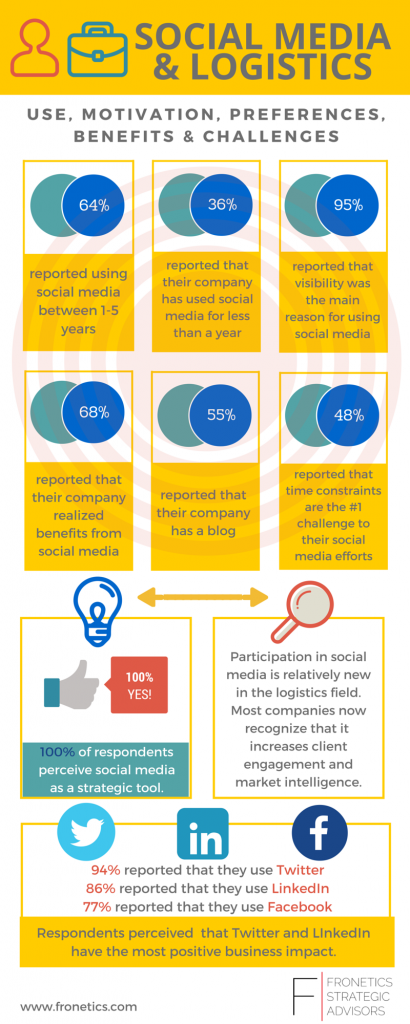
by Fronetics | Jul 1, 2015 | Blog, Leadership, Strategy
 How to increase prices and retain customers
How to increase prices and retain customers
Companies raise prices all the time. There are various reasons, explanations, and results. Sometimes companies disclose the changes, but sometimes customers and clients never even catch wind of a change. Let’s have a look at the causes, the perception, and the actions to take.
Why?
Usually there’s an impetus for a company to raise prices. Perhaps there’s a business model already in place to raise future prices, but often a price increase is tied to another event. Here are some typical reasons:
Spike in raw material prices used in manufacturing products
Is there dearth of raw materials used to make the products your company is producing? Perhaps there’s a lack of access to the materials due to stalled transportation from inclement weather, natural disaster, drought, etc. Perhaps resources are dwindling or other roadblocks in the supply chain are driving up prices.
Services or products have become incredibly popular (value-based pricing)
Perhaps you realize that your services or products weren’t appropriately priced early on, and you’re realizing your product’s value in the market. You may also need to reduce demand for some time by increasing prices.
Unexpected change in business or a new tact
Perhaps you’ve lost business recently or your business strategy has changed and you need to cover costs by increasing prices. These changes can come with the opening of a new branch or factory, or the launch of new services or products.
Inflation and market trends
It would be nice to keep prices where they started 5, 10, or 20 years ago, but most businesses aren’t sustainable that way. As all prices of other goods and services rise, so too must yours.
Perception
As detailed in an article about the power or perception, behavioral economist Richard Thaler ran an experiment in which some study members were asked how much money they would give a friend to go buy beer at a “run-down grocery store”. Some study members were asked to get the alcohol at a “fancy hotel”. According to the article, “the fancy resort’s median price was 71% higher than the run-down store’s price.”
This might suggest that considering the perception of your product or services could be key to your next price adjustment. Considering what your current branding is, who your competitors are, and where you want to see your company could help shift your own perception of your company, and that of others. Aligning the two could be critical to successfully stewarding a price shift.
How?
It’s important thoroughly think through a price adjustment. Considering your own worth is important, but understanding that some clients and customers won’t be convinced can be a hard pill to swallow. To make the change more palatable, or even attractive, you should consider these options:
Consider the tactic (good-value pricing, value-added pricing)
Are you planning on going to offer any promotions or price discounts in the future? Are you going to attach value-added features and services to support the higher prices? Are you considering doing bundles packages? It’s important to answer theses questions so that you can communicate to clients and customers.
Consider timing
Have you recently increased prices? Does it feel too soon to do it again? You could risk loyalty from consumers and clients if price increases come back to back. However some believe that small increases frequently are better than large increases infrequently.
Are you implementing new, improved services or bundling new packages? An announcement tied to value increase or product change can be more comfortable for consumers and clients.
Make a solid announcement
Most people feel it is best to announce an increase, especially to current customers and channel partners, rather than try to hide the increase. People don’t want to feel fooled or ignored. They want transparency.
Understand that wording is critical
Being direct and confident in expressing the increase is the best tact. Remember that if you value your product and services, your customers and clients are more likely to as well.
Although you’re briefly sharing the reason for the increase, don’t feel the need to disclose sensitive financial information.
Lastly, provide clear timing on the changes and be sure that changes don’t violate any pre-existing agreements.
Although some customers and clients may bristle at an increase of prices, if you’ve been playing fairly and providing solid products and services, many loyal customers will come along for the ride. If you value yourself, and others value you, you can survive a price increase. You may even thrive from one.
Fronetics Strategic Advisors is a leading management consulting firm. Our firm works with companies to identify and execute strategies for growth and value creation.
Whether it is a wholesale food distributor seeking guidance on how to define and execute corporate strategy; a telematics firm needing high quality content on a consistent basis; a real estate firm looking for a marketing partner; or a supply chain firm in need of interim management, our clients rely on Fronetics to help them navigate through critical junctures, meet their toughest challenges, and take advantage of opportunities. We deliver high-impact results.
We advise and work with companies on their most critical issues and opportunities: strategy, marketing, organization, talent acquisition, performance management, and M&A support.
We have deep expertise and a proven track record in a broad range of industries including: supply chain, real estate, software, and logistics.


by Fronetics | Jun 23, 2015 | Blog, Logistics, Marketing, Social Media, Strategy, Supply Chain, Transportation & Trucking

Drew McElroy, founder of the start-up Transfix, is no newcomer to the trucking industry. McElroy was born into the business; his parents owned and operated the freight brokerage Andrew’s Express, affectionately naming it after McElroy.
“I remember listening to my father structure deals. As a kid, it was all utterly confusing to me,” recalls McElroy. “I finally started to get my head around the economics of the business in my teens. From that point on, I became increasingly aware of the industry’s inefficiencies.”
Not long after McElroy graduated college, his father passed away unexpectedly. McElroy, already working for the family business, took over as president. In that time, McElroy successfully increased annual revenues from $4 million to $12 million. While impressive, McElroy still struggled with how the industry traditionally operated. “It was clear that our family business wouldn’t be the platform for world domination,” laughs McElroy. “But I believed that, fundamentally, there was a better way to get things done.”
Determined to build a new foundation based on his belief in “a better way,” McElroy left the family business and set out for San Francisco. He would spend the next year and a half couch surfing and networking in order to gain the expert business and tech insight he needed to plan what would become Transfix. “I knew logistics and I knew trucking, but I knew nothing about venture capital, or how to move from idea to implementation,” says McElroy. “I decided I should try – and try big. If I fail, I fail, but at least I tried.”
In 2013, McElroy was introduced to Jonathan Salama. Salama was among Gilt’s early engineers, and was pivotal in building the flash sale giant’s infrastructure and inventory software. McElroy knew Salama would be key in taking his idea to the next level; Transfix had claimed its co-founders, and its recipe for industry-leading success.
Transfix is a fully automated marketplace that is all about getting things from one place to another. What sets Transfix apart is the company’s platform and approach is vastly more efficient than the traditional approach, and it is much more user-friendly.
Transfix takes the industry’s inefficiencies head on. Transfix is a digital on-demand freight marketplace. It provides industry-leading mobile technologies and location-based jobs offers for independent over-the-road truck drivers, as well as cloud-based management platforms for small carriers and shippers
Here’s how it works:
A customer logs into the Transfix TMS and enters a new shipment. The platform automatically identifies the best driver depending on location, size of truck, etc., sending a load offer alert to the driver or company dispatcher by mobile SMS message or email. The load is accepted by electronic signature, at which point the customer receives automatic notification and the driver becomes fully visible within the customer’s real-time dashboard. Load management from that point on becomes “as simple as Tinder.” Transfix geofences the driver with a five mile radius, immediately alerting Transfix of any issues. Once the load is delivered, the driver is paid within 24 to 48 hours, significantly faster than the industry standard.
Transfix just launched an app (iOS and Android) that is focused on truck drivers. Transfix’s app integrates with the company’s digital marketplace and is driver-centric. The app gives drivers the ability to manage loads, map their itinerary, and manage payments. The app also provides truck drivers with trip planning essentials including the location of showers, ATMs, weigh stations, fuel prices, and weather. The app is free and can be used by anyone with a valid motor carrier number – the driver does not have to associated with Transfix. “Developing this app and making it freely available to all drivers is just the right thing to do,” says McElroy. “Without drivers, this industry would not exist. We need to do right by drivers by making their lives easier.”
Things are moving fast for McElroy and Transfix. Within 15 minutes of updating his LinkedIn profile, McElroy got a call from a logistics Manager at Barnes & Noble and, before he hung up, had freight loads to manage. Fast forward a few months – with Transfix, Barnes & Noble has realized improvements in their processes and has seen their deadhead runs (times driving without cargo) cut by at least 50%.
Transfix has raised close to $2.5 million to date and is already generating several thousand a month in revenue.
McElroy and Transfix are poised for world domination – mind you, a win-win benevolent hegemony – a la Uber.
Fronetics Strategic Advisors is a leading management consulting firm. Our firm works with companies to identify and execute strategies for growth and value creation.
Whether it is a wholesale food distributor seeking guidance on how to define and execute corporate strategy; a telematics firm needing high quality content on a consistent basis; a real estate firm looking for a marketing partner; or a supply chain firm in need of interim management, our clients rely on Fronetics to help them navigate through critical junctures, meet their toughest challenges, and take advantage of opportunities. We deliver high-impact results.
We advise and work with companies on their most critical issues and opportunities: strategy, marketing, organization, talent acquisition, performance management, and M&A support.
We have deep expertise and a proven track record in a broad range of industries including: supply chain, real estate, software, and logistics.


by Fronetics | Jun 10, 2015 | Blog, Logistics, Marketing, Social Media, Strategy, Supply Chain
Fronetics Strategic Advisors conducted a survey focusing on social media and logistics and supply chain companies. Respondents shared information on their social media use, motivation, preferences, benefits, and challenges. One-hundred percent (100%) of respondents reported that they have used social media for five years or less, indicating that social media is a relatively new strategy for logistics and supply chain companies. Mirroring other industries, including those in Fortune 500 status, social media is playing an increasingly important role in company branding, marketing, and client engagement.
For the current state of social media and logistics, here is an infographic that summarizes many of the key points from the full report.


by Fronetics | May 4, 2015 | Blog, Marketing, Social Media, Talent
Here’s why your employees should use social media.
“Come here Mr. Watson, I want to see you.” Those were the words yelled by Alexander Graham Bell over the world’s first telephone connection. Bell had no way of knowing that a little more than fifty years later there would be more than 30 million telephones in use. To be sure, the telephone served as one of the greatest tools of business communication for over a century, but we are now in the midst of a new kind of technological revolution – one that puts social media directly in the spotlight.
The proliferation of social media has spilled into every facet of our daily lives, and the business implications are complex and far-reaching. Even though 74% of online adults are reported to use social media, a study commissioned by Robert Half Technology found that about half of companies block employees from using social media websites at work. Interestingly, 92% of companies indicated social media as a priority in a 2014 study by Social Media Examiner. With most companies managing all social media at the corporate level for functions like marketing and communications, businesses are missing an opportunity to empower employees to be strong brand advocates while making them more productive, more satisfied, and more connected. That’s why businesses should consider extending social media participation beyond their marketing departments.
Social media transforms communication into content, and vice versa. While email still remains a primary vehicle for the transmission of ideas and information for many workplaces, its very nature inhibits collaboration – it’s ideally used as a tool for private two-way communication. On the other hand, social tools capture ideas and conversations of employees and create a public database of employee-generated content. Openly sharing this content, which was previously hidden behind the privacy of email, fosters inclusion and creates a culture of connectedness.
Responding to a fundamental shift in buyer behavior, sales and marketing professionals are increasingly turning to social media to drive growth. No longer are buyers responding to interruption-based sales tactics; instead, they’re listening to online conversations, engaging with peers, and performing their own research to find solutions to their problems. Companies have taken note and in doing so have transformed the way buyers and sellers now connect. Underscoring the importance for companies to adapt to this new way of connecting to potential customers is HubSpot’s finding that 73% of sales professionals using social media outperformed their colleagues who were not on social media networking sites.
While social media has transformed marketing and sales functions, it’s rewritten the rules for human resource functions. Hiring managers now have public access to a wealth of professional and personal information about potential job candidates, making recruitment efforts more comprehensive than ever. Likewise, candidates are increasingly placing more value on soft compensation like social policies and work flexibility when considering employment offers. The parameters of work and personal life are becoming more and more blurred, and employees are finding companies that embrace their use of digital technology most attractive. Companies with rigid tech policies stand to lose out on top talent.
Social media is proving equally as powerful as a tool for employee retention. Employers that choose to ban social media risk alienating Millennials, a group for which oscillating between real life and the digital world comes naturally. Staying connected is so important to this group that a 2011 study by McCann Worldgroup found that 53% would give up their sense of smell rather than their phone or laptop. Considering the increasing number of businesses actively seeking to attract and retain employees from this generation, finding a way to incorporate and leverage social media would likely prove a much better strategy than blocking access altogether.
Businesses that permit – and even encourage – employee use of social media are able to innovate quicker by monitoring and engaging in the online conversations of customers and potential buyers. With over 58% of the entire U.S. adult population on social media, you can be sure there are conversations happening about brands whether or not they choose to participate in social media. Beyond just monitoring what’s being said about a company or brand, active participation in social media allows for nimble adjustments to marketing messages and potential new product development.
Of course, in order to derive value from employee participation on networks of social media, employers must thoughtfully consider the implications of providing access and set clear expectations for employees about its use (or misuse). Rather than arbitrarily opening access to social media, Cheryl Connor, business communications expert and author of Beyond PR: Communicate like a Champ in the Digital Age, recommends managers take a more thoughtful, structured approach. She suggests managers talk through the concept of open access to social media with employees. Knowing how employees feel about social media makes it easier to accommodate their needs. It’s true that unregulated workplace access to social media won’t work for every business or every employee, but companies that manage to find a way to integrate social media into functions where it makes sense will create value and drive profitable action.

by Fronetics | May 4, 2015 | Blog, Marketing, Social Media, Talent
Here’s why your employees should use social media.
“Come here Mr. Watson, I want to see you.” Those were the words yelled by Alexander Graham Bell over the world’s first telephone connection. Bell had no way of knowing that a little more than fifty years later there would be more than 30 million telephones in use. To be sure, the telephone served as one of the greatest tools of business communication for over a century, but we are now in the midst of a new kind of technological revolution – one that puts social media directly in the spotlight.
The proliferation of social media has spilled into every facet of our daily lives, and the business implications are complex and far-reaching. Even though 74% of online adults are reported to use social media, a study commissioned by Robert Half Technology found that about half of companies block employees from using social media websites at work. Interestingly, 92% of companies indicated social media as a priority in a 2014 study by Social Media Examiner. With most companies managing all social media at the corporate level for functions like marketing and communications, businesses are missing an opportunity to empower employees to be strong brand advocates while making them more productive, more satisfied, and more connected. That’s why businesses should consider extending social media participation beyond their marketing departments.
Social media transforms communication into content, and vice versa. While email still remains a primary vehicle for the transmission of ideas and information for many workplaces, its very nature inhibits collaboration – it’s ideally used as a tool for private two-way communication. On the other hand, social tools capture ideas and conversations of employees and create a public database of employee-generated content. Openly sharing this content, which was previously hidden behind the privacy of email, fosters inclusion and creates a culture of connectedness.
Responding to a fundamental shift in buyer behavior, sales and marketing professionals are increasingly turning to social media to drive growth. No longer are buyers responding to interruption-based sales tactics; instead, they’re listening to online conversations, engaging with peers, and performing their own research to find solutions to their problems. Companies have taken note and in doing so have transformed the way buyers and sellers now connect. Underscoring the importance for companies to adapt to this new way of connecting to potential customers is HubSpot’s finding that 73% of sales professionals using social media outperformed their colleagues who were not on social media networking sites.
While social media has transformed marketing and sales functions, it’s rewritten the rules for human resource functions. Hiring managers now have public access to a wealth of professional and personal information about potential job candidates, making recruitment efforts more comprehensive than ever. Likewise, candidates are increasingly placing more value on soft compensation like social policies and work flexibility when considering employment offers. The parameters of work and personal life are becoming more and more blurred, and employees are finding companies that embrace their use of digital technology most attractive. Companies with rigid tech policies stand to lose out on top talent.
Social media is proving equally as powerful as a tool for employee retention. Employers that choose to ban social media risk alienating Millennials, a group for which oscillating between real life and the digital world comes naturally. Staying connected is so important to this group that a 2011 study by McCann Worldgroup found that 53% would give up their sense of smell rather than their phone or laptop. Considering the increasing number of businesses actively seeking to attract and retain employees from this generation, finding a way to incorporate and leverage social media would likely prove a much better strategy than blocking access altogether.
Businesses that permit – and even encourage – employee use of social media are able to innovate quicker by monitoring and engaging in the online conversations of customers and potential buyers. With over 58% of the entire U.S. adult population on social media, you can be sure there are conversations happening about brands whether or not they choose to participate in social media. Beyond just monitoring what’s being said about a company or brand, active participation in social media allows for nimble adjustments to marketing messages and potential new product development.
Of course, in order to derive value from employee participation on networks of social media, employers must thoughtfully consider the implications of providing access and set clear expectations for employees about its use (or misuse). Rather than arbitrarily opening access to social media, Cheryl Connor, business communications expert and author of Beyond PR: Communicate like a Champ in the Digital Age, recommends managers take a more thoughtful, structured approach. She suggests managers talk through the concept of open access to social media with employees. Knowing how employees feel about social media makes it easier to accommodate their needs. It’s true that unregulated workplace access to social media won’t work for every business or every employee, but companies that manage to find a way to integrate social media into functions where it makes sense will create value and drive profitable action.

 How to increase prices and retain customers
How to increase prices and retain customers





